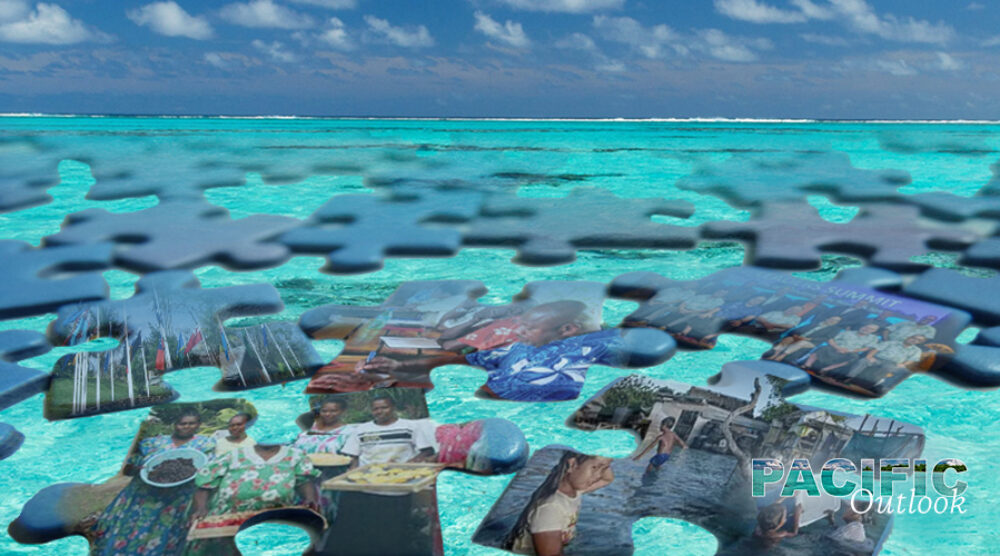Looking back at my professional career as a climate change and disaster advisor to date, I’ve observed that one of the common denominators across success stories was multi-stakeholder collaborations. In this sense, it was not ‘what’ was worked on, but the ‘way’ of working that enabled successful outcomes to occur. Examples of multi-stakeholder collaborations have included for example, horizontal collaboration (at the sub-national level this may have included combinations of local government, private sector, NGOs and community groups) and vertical collaboration (in country, this included connections between multi-level governance systems such as traditional governance, local government, sector ministries, regional and international organisations) in order to achieve progress on common issues and goals. At an international level, this included connecting countries or national civil society actors with each other through international networks. This increased their collective agency in the broader regional and international governance structures. Success often resulted from a combination of vertical and horizontal collaborations and drawing upon international networks.
Given the enormity of the Pacific region’s climate change, disaster and development challenges, it is clear that no one actor can solve such complex problems alone. Partnerships are often put forth as a key means of achieving ambitious global sustainable development goals; in fact, SDG 17 focuses entirely on ‘Partnerships for the goals’. Given diverse strengths and areas of focus, there are clearly roles for government, civil society and private sector actors in working towards robust development outcomes. The Pacific region’s Framework for Resilient Development (FRDP), endorsed by Pacific leaders in 2016, states that the achievement of the Framework’s goals “will critically depend on the existence of a sound enabling environment, including the availability of resources, the establishment of good governance arrangements, and effective dialogue, communication and partnership“.
More recently, the participants of 2019 Pacific Urban Forum committed to forming numerous action-oriented partnerships, and encouraged participants to form partnerships at all levels in order to meet the growing needs of urban populations in the Pacific region. In line with these broader international trends for decision making to become more inclusive, a more collaborative form of governance is emerging. In many cases, this leads to greater public benefits through pooling of resources and expertise and is a means of addressing complex public issues.
Collaborative governance has grown in prominence in public administration literature in recent years, as a promising alternative to top down, authoritative governance. Recent reports from the Intergovernmental Panel on Climate Change also highlight governance as a key determinant of our collective capacity to adapt to a changing climate, and that “cross-scale and cross-domain coordination linking differing jurisdictional levels, sectors and policy domains is often needed for effective responses”. The urgent transformations required to reach a low-carbon, climate resilient future have in part sparked a rapid increase in literature on the use of collaborative governance for climate change adaptation and disaster resilience.
Many case studies demonstrate that collaborative governance leads to greater efficiency and reduced duplication, as well as enhancing the scope and ability of problem solving. Decision making can also become more transparent and responsive to diverse needs, improving outcomes and levels of trust.
Of course, collaborative governance is not a panacea and there are costs associated with engaging with it as a strategy. For example, it can bring increased complexity to decision making, perpetuate power inequities, requires ongoing relationship management and the need to deal with conflict. Though some authors state that working through, rather than avoiding, differences is necessary for successful collaboration.
There are a multitude of approaches, experiences and ‘tools’ that can be drawn upon to enable enhanced participation of stakeholders and realise a more inclusive form of governance in the Pacific region, at all levels. These include coalitions; city-citizen interactions; private/public partnership; more permanent and formally legislated platforms; informal and more temporary groupings that are geographically based (such as within a particular city or island); and problem, policy development and/or implementation focused.
There are two quite prominent examples of collaborative governance being implemented in the Pacific region. The first is the ‘Pacific Resilience Partnership’ (PRP) Taskforce established and mandated under the FRDP. The taskforce oversees a biennial Pacific Resilience Meeting and is supported by a Taskforce Support Unit and Technical Working Groups. A multi-stakeholder regional platform, the Taskforce gives representation from Pacific island countries, civil society, private sector, regional organisations and development partners such as the United Nations and academia. The aim of the PRP is to essentially help translate the FRDP from paper to action.
The second example that has been rolled out to various extents across the Pacific region is the globally recognised ‘humanitarian cluster system’. At the Pacific regional level, this takes the form of the Humanitarian Partnership, the regional ‘cluster’ of actors made up of United Nations agencies, prominent international NGOs and the International Federation of Red Cross and Red Crescent Societies. At the national level, various permutations of the cluster system have been established or are in the process of being established in countries such as Vanuatu, Solomon Islands, Fiji and Tonga. In some cases, these have been extended to sub-national level. While their main purpose is for humanitarian response and disaster recovery, they have been useful instruments for preparedness, and broader risk reduction. With growing examples of collaborative governance for the purposes of climate and disaster resilient development across the region, it may be time to take stock of experience to date. Knowing what is working and why and creating opportunities to learn from that is important for growing the art of collaboration.
There are clear benefits of collaborative governance for climate and disaster resilient development and we should do more to build upon the rich collaborative problem-solving experiences of the Pacific region.
Rebecca McNaught is undertaking her PhD on collaborative governance at the Department of Business Strategy and Innovation. She is also a Partner at Pacific Connections (Australia), a boutique consultancy business undertaking research and advisory services on issues relating to the Pacific region.








